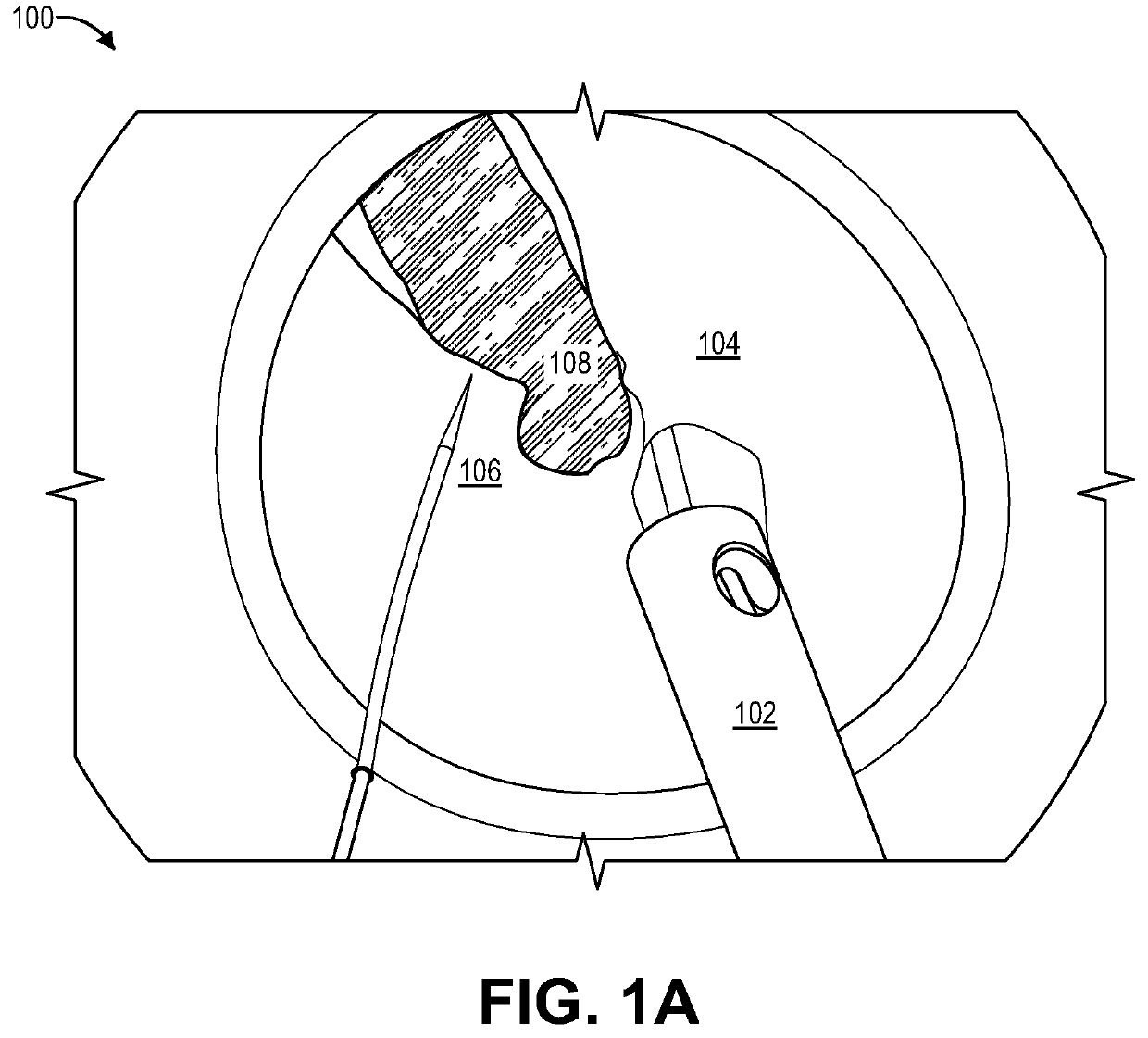Method for eye lens removal using cavitating microbubbles
a technology of cavitation and cataracts, applied in the field of cataract extraction, can solve the problems of significant safety drawbacks, loss of corneal endothelial cells, and possible vision-threatening complications, and achieve the effect of efficient fragmentation of cataracts and augmenting phacoemulsification
- Summary
- Abstract
- Description
- Claims
- Application Information
AI Technical Summary
Benefits of technology
Problems solved by technology
Method used
Image
Examples
Embodiment Construction
[0044]The disclosed system and method of cataract fragmentation and extraction improves over conventional phacoemulsification techniques.
[0045]Technical advantages of some of the system and method embodiments include improved safety and efficiency of cataract removal surgery, reduced costs associated with phacoemulsification, and lowered training requirements or less of a learning curve for ophthalmological surgical residents.
I. Cataract Surgery and Potential Complications
[0046]The goal of cataract surgery is to extract a cataractous lens and implant an artificial lens in its place. The standard modern technique for cataract extraction relies on phacoemulsification (also referred to as “phaco”), or fragmenting the cataract, emulsifying it with irrigating fluid, and aspirating the emulsified cataract from the eye. The basis for fragmenting and emulsifying the cataract is that removing the cataract in pieces, rather than en bloc, permits surgery through a corneal incision significantl...
PUM
 Login to View More
Login to View More Abstract
Description
Claims
Application Information
 Login to View More
Login to View More - R&D
- Intellectual Property
- Life Sciences
- Materials
- Tech Scout
- Unparalleled Data Quality
- Higher Quality Content
- 60% Fewer Hallucinations
Browse by: Latest US Patents, China's latest patents, Technical Efficacy Thesaurus, Application Domain, Technology Topic, Popular Technical Reports.
© 2025 PatSnap. All rights reserved.Legal|Privacy policy|Modern Slavery Act Transparency Statement|Sitemap|About US| Contact US: help@patsnap.com



